-
 Bitcoin
Bitcoin $117400
0.05% -
 Ethereum
Ethereum $3767
0.13% -
 XRP
XRP $3.554
2.85% -
 Tether USDt
Tether USDt $1.000
0.01% -
 BNB
BNB $766.5
1.11% -
 Solana
Solana $196.6
8.51% -
 USDC
USDC $0.0000
0.01% -
 Dogecoin
Dogecoin $0.2716
-0.23% -
 Cardano
Cardano $0.8901
3.81% -
 TRON
TRON $0.3144
0.09% -
 Hyperliquid
Hyperliquid $44.52
-3.11% -
 Stellar
Stellar $0.4735
2.59% -
 Sui
Sui $3.978
2.18% -
 Chainlink
Chainlink $19.59
1.45% -
 Hedera
Hedera $0.2715
0.05% -
 Avalanche
Avalanche $25.48
1.87% -
 Bitcoin Cash
Bitcoin Cash $523.6
-4.49% -
 Shiba Inu
Shiba Inu $0.00001551
0.09% -
 Litecoin
Litecoin $115.9
-0.92% -
 UNUS SED LEO
UNUS SED LEO $8.992
0.06% -
 Toncoin
Toncoin $3.336
2.13% -
 Polkadot
Polkadot $4.510
0.70% -
 Uniswap
Uniswap $10.91
2.37% -
 Ethena USDe
Ethena USDe $1.001
0.02% -
 Pepe
Pepe $0.00001421
1.31% -
 Monero
Monero $320.2
-1.73% -
 Bitget Token
Bitget Token $4.950
0.14% -
 Dai
Dai $0.0000
-0.02% -
 Aave
Aave $323.3
0.00% -
 Bittensor
Bittensor $447.5
8.38%
What is a smart contract ABI?
The smart contract ABI acts as an interface, enabling apps and wallets to interact with blockchain contracts by defining how functions and events are encoded and decoded.
Jul 21, 2025 at 06:07 pm
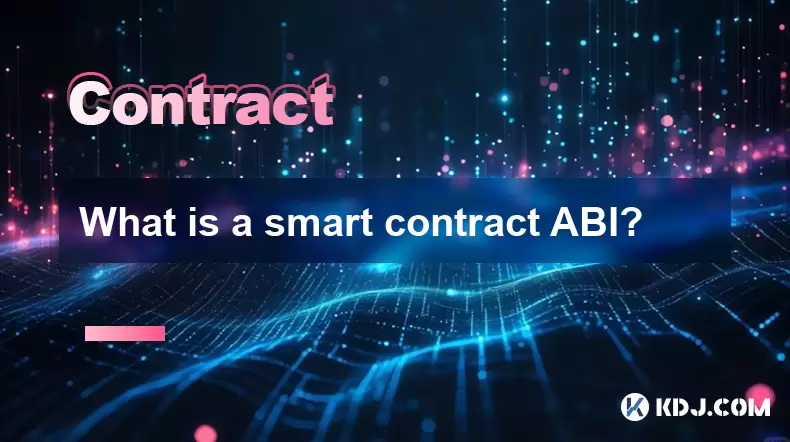
Understanding the Concept of Smart Contract ABI
A smart contract ABI, or Application Binary Interface, is a critical component in the world of blockchain and smart contract development. It serves as a bridge between the high-level code written by developers and the low-level interactions that occur on the Ethereum Virtual Machine (EVM) or other compatible blockchain environments. The ABI defines how data is encoded and decoded when interacting with a smart contract, enabling external applications, wallets, or other contracts to communicate effectively with it.
The ABI essentially acts as an interface, detailing the functions and events of a smart contract in a standardized format. This allows developers to interact with the contract using tools like Web3.js or ethers.js without needing to understand the internal mechanics of the EVM.
Structure of a Smart Contract ABI
The ABI is represented as a JSON array, where each element corresponds to a function or event in the smart contract. Each entry includes several key fields that define the behavior and expected inputs or outputs.
- type: Specifies whether the entry is a function, event, or error.
- name: The name of the function or event.
- inputs: An array describing the parameters required by the function or emitted by the event. Each input includes a name, type, and potentially indexed status for events.
- outputs: For functions, this array describes the return values.
- stateMutability: Indicates if the function changes the state (non-payable, payable, view, or pure).
- anonymous: A boolean used for events to indicate if the event is anonymous.
For example, a function named transfer with parameters _to and _amount will have an entry in the ABI that specifies their types (address and uint256, respectively) and how they should be encoded when called.
How the ABI Facilitates Smart Contract Interaction
When a developer wants to call a function on a deployed smart contract, the ABI is used to encode the function call into bytecode that the EVM can understand. Similarly, when a function returns data, the ABI helps decode the response back into readable values.
For instance, using the ethers.js library, a developer can connect to a contract by providing its address and ABI. This allows the library to generate JavaScript functions that correspond to the contract’s methods. When a function like balanceOf(address) is called, the ABI ensures the address is properly encoded and the returned balance is correctly interpreted.
This process is essential for wallet integrations, decentralized applications (dApps), and inter-contract communication, as it ensures that all parties are interpreting the data in the same way.
Generating and Accessing the ABI
During the compilation of a Solidity smart contract, tools like Solc (Solidity Compiler) or Truffle automatically generate the ABI alongside the bytecode. Developers can also use Remix IDE, where the ABI is available for download after compilation.
To manually extract the ABI from a compiled contract:
- Open the compiled contract in Remix IDE.
- Navigate to the "Compilation Details" section.
- Click on the "ABI" tab.
- Copy or download the JSON-formatted ABI.
In a Truffle project, the ABI is saved in the build/contracts directory after running truffle compile. Developers can import this ABI into frontend applications or other smart contracts to establish communication.
Using the ABI in Practice: A Step-by-Step Example
To demonstrate how the ABI is used in practice, let’s walk through a simple example using Web3.js to interact with an ERC-20 token contract.
- Deploy an ERC-20 contract on a testnet like Ropsten or use a local development blockchain like Ganache.
- Compile the contract using Solidity compiler and retrieve the ABI.
- Install Web3.js in your project using npm:
npm install web3 - Import Web3 and initialize a provider:
const Web3 = require('web3');
const web3 = new Web3('https://ropsten.infura.io/v3/YOUR_INFURA_PROJECT_ID'); - Provide the contract address and ABI:
const contractAddress = '0x...';
const abi = [ / ABI JSON here / ]; - Create a contract instance:
const contract = new web3.eth.Contract(abi, contractAddress); - Call a function, such as
balanceOf:contract.methods.balanceOf('0x...').call()
.then(balance => console.log(web3.utils.fromWei(balance, 'ether')));
This example illustrates how the ABI enables developers to interact with smart contracts programmatically, abstracting away the complexities of EVM interactions.
Common Use Cases of Smart Contract ABIs
The ABI plays a pivotal role in various blockchain applications. Some of the most common use cases include:
- Wallet Integration: Wallets like MetaMask use ABIs to recognize and interact with custom tokens and contracts.
- Decentralized Finance (DeFi) Platforms: Protocols like Uniswap or Aave rely on ABIs to integrate with various tokens and lending pools.
- Smart Contract Testing: Developers use ABIs during testing to simulate interactions and verify expected outcomes.
- Blockchain Explorers: Platforms like Etherscan utilize ABIs to decode transaction data and display human-readable function calls and event logs.
Without the ABI, these applications would struggle to interpret the raw hexadecimal data exchanged between users and smart contracts, making it a foundational element in blockchain development.
Frequently Asked Questions
Q: Can I interact with a smart contract without its ABI?
A: While it is technically possible to interact with a contract using only its bytecode, it is extremely difficult and not practical. The ABI provides the necessary metadata to understand function signatures and event structures, making it essential for most development workflows.
Q: Is the ABI unique for each smart contract?
A: The ABI is specific to the contract’s interface, meaning that two contracts with the same functions and events will have identical ABIs. However, if the contract code changes, especially function names or parameters, the ABI will also change.
Q: How do I verify a contract’s ABI on Etherscan?
A: On Etherscan, you can verify a contract by providing the source code. Once verified, the platform automatically generates and displays the ABI under the "Contract" tab, allowing users and developers to access it for integration purposes.
Q: Can I modify the ABI after deploying a contract?
A: The ABI is derived from the contract’s source code, so any changes to the contract’s functions or events will result in a new ABI. Since blockchain is immutable, you cannot change the ABI of a deployed contract without redeploying it.
Disclaimer:info@kdj.com
The information provided is not trading advice. kdj.com does not assume any responsibility for any investments made based on the information provided in this article. Cryptocurrencies are highly volatile and it is highly recommended that you invest with caution after thorough research!
If you believe that the content used on this website infringes your copyright, please contact us immediately (info@kdj.com) and we will delete it promptly.
- Bitcoin, Trump Media, and Acquisition: A New York Perspective
- 2025-07-22 06:30:12
- Venture Capital, Crypto Treasuries, and Ethena (ENA): A New York Perspective
- 2025-07-22 06:50:13
- Solana: Building a Decentralized Nasdaq with Block Assembly Marketplace?
- 2025-07-22 06:30:12
- Jito, BAM, and Solana MEV: A New Era for Blockspace?
- 2025-07-22 06:50:13
- Raydium, Crypto Payroll, and Transformation: A New Era for Fintech
- 2025-07-22 07:30:12
- Arctic Pablo Coin Presale: The Meme Coin Opportunity of 2025?
- 2025-07-22 07:35:12
Related knowledge

What is a maker vs a taker fee?
Jul 19,2025 at 01:14am
Understanding the Basics of Cryptocurrency Exchange FeesIn the world of cryptocurrency trading, maker vs taker fees are a fundamental concept that eve...
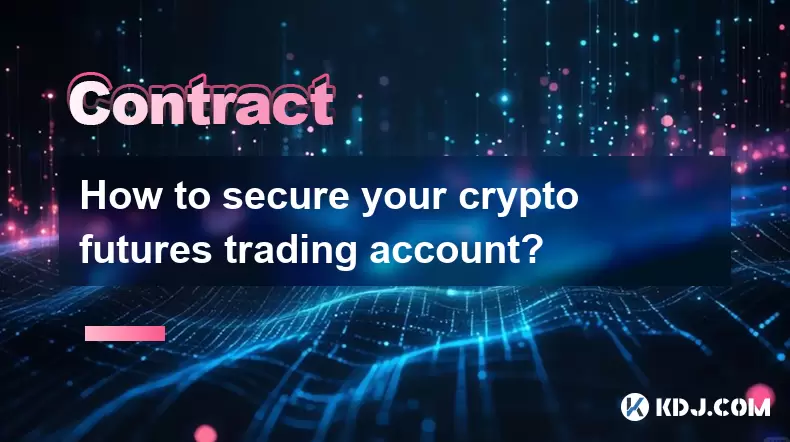
How to secure your crypto futures trading account?
Jul 21,2025 at 11:42pm
Understanding the Risks in Crypto Futures TradingCrypto futures trading involves significant risks due to market volatility and leverage. Your trading...
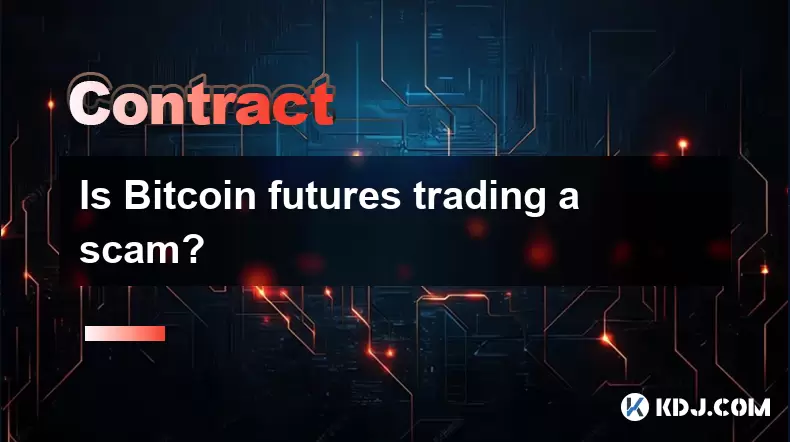
Is Bitcoin futures trading a scam?
Jul 22,2025 at 01:42am
Understanding Bitcoin Futures TradingBitcoin futures trading refers to the process of buying and selling contracts that derive their value from the fu...

How to analyze Bitcoin futures data from CME?
Jul 19,2025 at 05:22pm
Understanding Bitcoin Futures on CMEBitcoin futures on the CME Group (Chicago Mercantile Exchange) represent a regulated financial instrument that all...
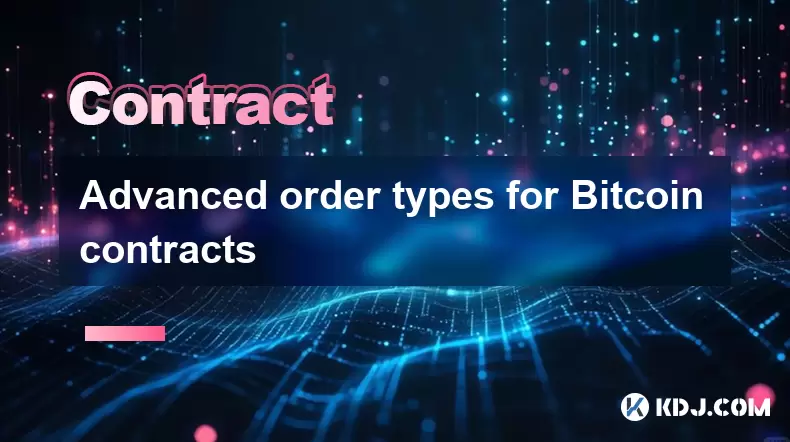
Advanced order types for Bitcoin contracts
Jul 21,2025 at 01:14pm
Understanding Advanced Order Types in Bitcoin ContractsIn the world of Bitcoin futures trading, advanced order types play a crucial role in managing r...
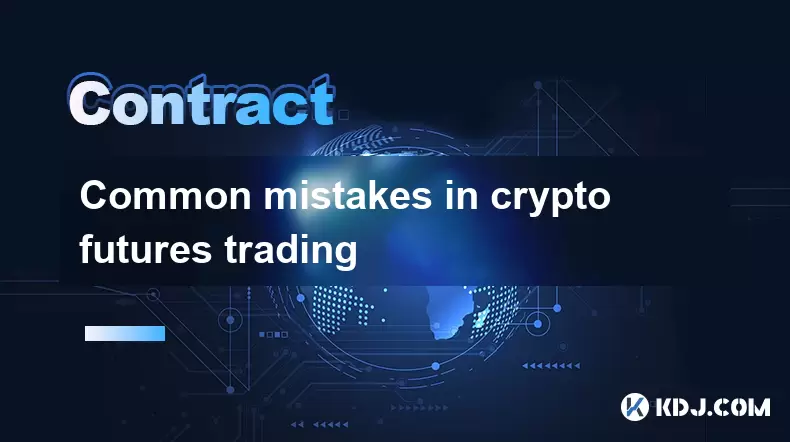
Common mistakes in crypto futures trading
Jul 20,2025 at 09:56pm
Overleveraging Without Risk ManagementOne of the most common mistakes in crypto futures trading is overleveraging. Traders often believe that using hi...

What is a maker vs a taker fee?
Jul 19,2025 at 01:14am
Understanding the Basics of Cryptocurrency Exchange FeesIn the world of cryptocurrency trading, maker vs taker fees are a fundamental concept that eve...

How to secure your crypto futures trading account?
Jul 21,2025 at 11:42pm
Understanding the Risks in Crypto Futures TradingCrypto futures trading involves significant risks due to market volatility and leverage. Your trading...

Is Bitcoin futures trading a scam?
Jul 22,2025 at 01:42am
Understanding Bitcoin Futures TradingBitcoin futures trading refers to the process of buying and selling contracts that derive their value from the fu...

How to analyze Bitcoin futures data from CME?
Jul 19,2025 at 05:22pm
Understanding Bitcoin Futures on CMEBitcoin futures on the CME Group (Chicago Mercantile Exchange) represent a regulated financial instrument that all...

Advanced order types for Bitcoin contracts
Jul 21,2025 at 01:14pm
Understanding Advanced Order Types in Bitcoin ContractsIn the world of Bitcoin futures trading, advanced order types play a crucial role in managing r...

Common mistakes in crypto futures trading
Jul 20,2025 at 09:56pm
Overleveraging Without Risk ManagementOne of the most common mistakes in crypto futures trading is overleveraging. Traders often believe that using hi...
See all articles

























































































